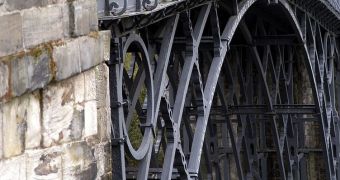Structural engineers may get some new help in their efforts to construct better, larger, more resilient bridges, if they decide to use composite materials rather than iron, steel, concrete and timber.
The new materials are a lot lighter, more durable, rust and corrosion resistant and end up costing cheaper than established ones, which have been used for centuries.
Using advanced composites could reduce bridge construction times by up to 50 percent, therefore making the job a lot easier and cheaper. Additionally, traffic flow will not be hampered too much, which will result in less economic loss.
Both the aerospace and the automotive industries can attest to the success and capabilities of these materials. These fields have been using composites for decades, taking them to space and on the most advanced automobiles out there.
Yet, it would appear that no one gave too much consideration to using them for constructing larger structures such as bridges. This probably happened because scientist could not find a cost-effective civil engineering application for them.
But, in a recent study, a team of researchers from the University of Bristol proposed a new alternative to using composite materials to create decks for traffic bridges. The research group was led by expert Dr Wendel Sebastian.
He holds an appointment as a senior lecturer in structural engineering in the Department of Civil Engineering at the University of Bristol. The expert says that countries such as the US, the UK and Spain have already employed the new technology.
He adds however that the rest of the world is slow on the uptake, and that modern bridge engineering is not yet showing signs of adopting advanced materials just yet.
One of the main things preventing this for happening is the lack of studies into composite materials' weathering patterns. No one knows precisely how they react to large loads, and how they perform under fatigue.
Until these issues are settled, it's highly unlikely that engineering offices around the world will start using composites. This is why the UB team is currently running a variety of such tests, in a bid to help constructors decided on using composites.
“Due to their low weights, high stiffness and high strength, advanced composites are leading to a new generation of lighter and more fuel-efficient aircraft such as Airbus’ A350, and also Boeing’s 787 Dreamliner which is heading towards 20 per cent better fuel efficiency than traditional aircraft,” Sebastian says.
“We would like to achieve an equivalent transformation in Civil Engineering, with advanced composites underpinning step changes in the economics, sustainability and structural performance of road bridges,” he concludes.

 14 DAY TRIAL //
14 DAY TRIAL //